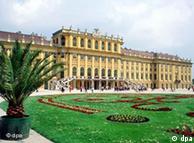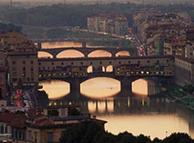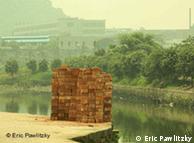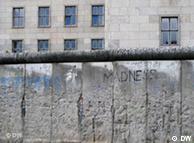Winter in the Sun
Ian Fleming’s Jamaica

Alex Quesada for The New York Times
Strawberry Hill is an 18th-century plantation turned resort.
By DAVID G. ALLAN
Published: November 9, 2008
“THE first law for a secret agent is to get his geography right,” Ian Fleming wrote in “The Man With the Golden Gun.” And so it is for anyone following the trail of the man who created the world’s most famous secret agent through his adopted island of Jamaica, a journey that starts near Kingston on the tiny spit of beach called the Palisadoes that connects the city to Norman Manley International Airport.
Most of the traffic heads into the capital, but if you steer westward, snaking around the contours of dunes on the poorly paved street toward the peninsula’s dead end, you’ll find Morgan’s Harbour Hotel in Port Royal.
Only five miles from the airport, you are already deep into Ian Fleming’s Jamaica.
Fleming, the British intelligence officer turned newspaper man turned spy novelist born 100 years ago this year, spent winters on his Caribbean getaway for almost two decades. The airport and the Palisadoes both feature in James Bond novels; the hotel is where Bond chose to lay his head in “Golden Gun.” It was on Jamaica that Fleming wrote more than a dozen novels and short stories featuring Agent 007. Of these once best-selling volumes of action pulp, “Dr. No,” “Live and Let Die,” “The Man With the Golden Gun” and the short story “Octopussy” are largely or partly set in Jamaica, and the films based on the first two were also shot there.
The island was Fleming’s retreat, artist colony and passion, and he repeatedly sent Bond, an incarnation of Walter Mitty-esque wish fulfillment, on assignment there. The legendary spy experienced the island as Fleming did — beautiful and underdeveloped with enough exoticism, history and potential for danger to justify it as a backdrop for postwar espionage adventure.
Fleming’s Jamaica is a Venn diagram of three overlapping spheres: the author’s actual Jamaica of the 1950s and early ’60s (when the island was a British colony rapidly becoming a hot spot for the rich and famous); the semi-fictional Jamaica as seen through James Bond; and Jamaica as a location for the 007 film franchise.
While the rural interior of the country has changed little in the last 50 years, the huge, buffet-to-beach inclusive resorts and a blighted downtown Kingston, once high on the jet-setters’ dance cards, would now discourage Fleming. He lived in Jamaica when you could get there by banana boat, and he described Negril on the west coast as a “five-mile crescent of unbroken, soft, white gold sand, fringed for all its dazzling length with leaning palm trees.”
In 1947 Fleming wrote a portrait of his adopted home in Horizon magazine, influential enough to fuel a postwar tourist boomlet among well-heeled Britons and Americans. “I have examined a large part of the world,” he wrote. “After looking at all these, I spent four days in Jamaica in July 1943. July is the beginning of the hot season and it rained in rods everyday at noon, yet I swore that if I survived the contest I would go back to Jamaica, buy a piece of land, build a house and live in it as much as my job would allow.” He did just that, as foreign manager for Kemsley Newspapers.
The Palisadoes at night is still as Fleming described it in “Dr. No,” a “long cactus-fringed road” with “the steady zing of the crickets, the rush of warm, scented air ... the necklace of yellow lights shimmering across the harbour.” Not so Morgan’s Harbour Hotel, now an estranged and shabbily furnished cousin of the “romantic little hotel” from “Golden Gun.”
Kingston, reached by the road used in the first car chase in “Dr. No,” sits beside bright blue waters and beaches littered with broken boats and the rusting remains of bygone industry. It feels like an early Bond film — vibrant, colorful and a bit disconcerting. What Kingston does not resemble, for the most part, is itself from the Fleming days. Justine Henzell, a Kingston native whose father, Perry, was a writer of the reggae-fueled movie “The Harder They Come,” was my guide to the city. As we wandered downtown, Ms. Henzell pointed out the urban shadows of former elegance, including an empty lot by the water where the Myrtle Bank Hotel, once one of the Caribbean’s most glamorous, had stood. The vacant space now borders a parking lot where hundreds of young people reveled to loud dancehall beats in the middle of a Sunday afternoon.
When Fleming made his first visit to the island 65 years to the month when I was there, he chose to stay in the cooler climes of the Blue Mountains. I followed his lead that evening and took the B1 road, which curls itself up into the mountains. My destination was Strawberry Hill, an 18th-century coffee plantation turned resort owned by Chris Blackwell, the founder of Island Records. A Jamaican native, Mr. Blackwell is part of Fleming lore himself, thanks to his mother, Blanche Blackwell, who was, depending on your source, either the writer’s close friend or his mistress and muse. That connection helped Mr. Blackwell, at age 24, land a gig as a location manager for “Dr. No” (you can spot him dancing in a bar scene filmed at Morgan’s Harbour), and his resort franchise includes the Fleming home on the North Coast.
Over a breakfast of scrambled eggs and Blue Mountain coffee (the same morning fare Fleming preferred and Bond nearly always enjoyed) on the balcony of a private bungalow, guests overlook the same vista Bond did in “Live and Let Die,” where he “had his breakfast on the veranda and gazed down on the sunlit panorama of Kingston and Port Royal.”
Most of Fleming’s days in Jamaica, though, were spent on the northern coast, best reached by the A3, or Junction Road, “that runs across the thin waist of Jamaica.” Bond and his local sidekick Quarrel travel the same route in “Live and Let Die” to get to the secret island lair of the villainous genius Mr. Big.
The mountainous interior of the island, “like the central ridges of a crocodile’s armour” as Fleming put it in “Live and Let Die,” is a constant pull on the steering wheel, back and forth, through little villages, past cliffside sundries shops and on numerous detours into rutted, gravel-spattered dirt roads. It’s a relief to reach the other side and spill into the ramshackle town of Port Maria, its pristine aquiline bay punctuated by the diminutive and uninhabited Cabarita Island, which inspired Surprise Island, the fictional hideout of Mr. Big.
Fleming and his wife, Ann, were married in Port Maria’s town hall, which still stands. She didn’t share her husband’s love of Jamaica, never staying as long as he did. But his best man and local neighbor, Noël Coward, was equally smitten with the place. Coward was a year-round island resident and a tax exile who died there in 1973. The home he built, Blue Harbour, is a compound of seaside bungalows overlooking Port Maria’s bay. Guests can now stay there if they can find it. The only marker is a small, faded sign pointing down a heavily potholed road leading to a rusty white gate.
Judging by the décor and electrical wiring, Blue Harbour has pretty much been left untouched. But despite its rough edges, provincial food and generally musty condition, it has three things going for it: a stunning perch over the sea, a cliffside saltwater pool and a rich history. You can imagine a rotating cast of celebrities like Errol Flynn (who also lived on the North Coast), Katharine Hepburn, Elizabeth Taylor, James Mason and Laurence Olivier, all lounging poolside. The living room is hung with pictures of celebrities like Sean Connery, Alec Guinness clowning in the pool in Arabian headdress and a group shot that included the Flemings.
The scene became too much for Coward, who relocated to a higher perch above Blue Harbour. His retreat from his retreat, Firefly, is now a museum and his grave site. His friends gave their homes colorful names as well. Fleming’s haven, about 10 miles west, was Goldeneye, named for a wartime operation he was involved in, and now one of the most exclusive resorts on the island. Between the two writers lived Blanche Blackwell, at Bolt.
Of his mother’s relationship with Fleming, Chris Blackwell simply told me that she was a good friend of his and was very fond of him. As a thank you gift for a stay at Goldeneye, Ms. Blackwell gave Fleming a small boat she had christened Octopussy. She may have also been an inspiration for Honeychile Rider, the Bond girl from “Dr. No,” who, like Ms. Blackwell, was the Jamaica-born child of an old island family and a passionate student of sea life.
Situated in the small town of Oracabessa, once a banana port, Goldeneye is an unassuming patch of land with stone paths and trees planted by former famous guests. Handwritten signs mark the mango planted by Pierce Brosnan, the lime tree by Harrison Ford, the royal palms by the Clintons. Set among them are three villas that, with Fleming’s original house and a restaurant overlooking the ocean, make up the current property. Where the restaurant sits, a gazebo once stood. Fleming liked to take notes in it, and it once served as a command station when Prime Minister Anthony Eden of Britain visited Goldeneye in 1956 (another boon for Jamaican public relations).
The Honeychile villa, just over a small fence from Fleming’s house, is nicely appointed with a plush bed draped in mosquito netting, a claw foot tub and an outdoor shower built into a large banyan tree. The bedroom is flanked by a second house with a patio overlooking the sea and a bookshelf housing a nearly complete set of the Bond stories (written a hundred feet away). It is hard to imagine the resort retaining that kind of casual intimacy when Goldeneye’s 100-acre residential development currently under construction is finished in the coming years.
Establishing his life in Jamaica was a necessary precursor to Fleming’s pursuit of fiction. “One of the first essentials is to create a vacuum in my life which can only be satisfactorily filled by some form of creative work,” he wrote in the Evening Standard of London. His training as a Reuters correspondent was another ingredient in this equation, allowing him to write with a don’t-look-back, free-flow technique. Six weeks later you have a novel, he wrote, and “if you sell the serial rights and film rights, you do very well.” Indeed.
Before mass-market guides like Frommer’s and Lonely Planet, travelogues were tourists’ main resources outside Europe. For the 1950s Caribbean, Patrick Leigh Fermor’s “The Traveler’s Tree” was the bible. Mr. Fermor visited Goldeneye and glowingly wrote that “it might serve as a model for new houses in the tropics ... great windows capture every breeze, to cool, even on the hottest day, the large white rooms.” His description is apt. The small house’s windows are still without glass. Past the sunken garden is the private beach to which Fleming often trod — fins, mask and spear in hand. The small rock pool Fleming built for his son, Casper, is still standing. Black crabs crawl along its walls, recalling the swarm of them that Dr. No uses to try to torture Honeychile to death. This perch out to the reef that shielded the snorkeling writer from sharks and barracuda directly inspired Fleming’s work.
Of the entire 007 cannon, the short story “Octopussy,” written in 1962, best captures his island lifestyle. The story is about Major Dexter Smythe, a Briton “irretrievably tied to Jamaica,” attracted to the “paradise of sunshine, good food, cheap drink, a glorious haven from the gloom ... of postwar England” but later bored from consorting with the “international riffraff” of the north shore. His one joy is exploring the local sea life, including the eponymous octopus to which he feeds conch.
Fleming’s gardener, Ramsey Dacosta, who still works at Goldeneye (now in guest relations) and invariably referred to Fleming as the Commander, told me that his old employer would bring conch to an octopus at the reef, and, as in the short story, “the octopus would return the shell.” Bond makes a brief appearance in “Octopussy” to arrest Smythe for a wartime theft, but Smythe takes his own life, with help from the octopus. Fleming died a much less dramatic death from a heart attack in 1964 in England, where he is buried.
Goldeneye is the mecca of any Fleming pilgrimage, but not the heart of it. In Horizon, he wrote about the other elements that made his life in Jamaica fulfilling, from the food (“delicious and limitless”) to the weather, calypso and, most importantly, the people. Fleming wrote that the locals “will surprise and charm you,” which they often did during my time there.
But even in Fleming’s lifetime, Jamaica was evolving. By the time he wrote his final Bond novel, “Golden Gun,” in 1964, the island had gained independence from Britain, and Fleming’s nostalgia for the colonial era is channeled into his spy. Waiting in the Kingston airport for a flight to Havana, the secret agent recalls his “many assignments in Jamaica and many adventures on the island ... the oldest and most romantic of former British possessions.” As he reflected on his escapades in “Dr. No” and his love affair with Honeychile Rider, “James Bond smiled to himself,” Fleming wrote, “as the dusty pictures clicked across his brain.”
GETTING THERE
Air Jamaica flies from Kennedy Airport in New York to Kingston and Montego Bay. According to a recent online search, flights for travel next month start at about $500.
WHERE TO EAT
Ashanti Oasis (Hope Gardens, Kingston; 876-970-2079) is an open-air vegetarian restaurant in the middle of the peaceful botanical gardens. The menu varies daily, but you can’t go wrong with a combination platter of the day’s tropically inspired dishes and a fresh juice. Lunch for two is around $1,300 Jamaican dollars, about $17 at 75.8 Jamaican dollars to the U.S. dollar.
The Seaside Terrace at Round Hill Hotel and Villas (John Pringle Drive, Montego Bay; 876-956-7050; www.roundhill.com) feels as if you’ve gone back 50 years when Jamaica catered to the rich and famous. The enormous bar is lined with black-and-white photos of celebrities from that era, and you can enjoy hearty à la carte fare like escovich snapper sandwiches on coco bread ($18; American currency is widely accepted for payment) under umbrellas by the water.
ON THE TRAIL OF THE MAN BEHIND 007
WHERE TO STAY
Other than its proximity to the Kingston airport, the only reason to stay at the underfurnished Morgan’s Harbour Hotel & Marina (Palisadoes Road, Port Royal; 876-967-8040; www.morgansharbour.com; about $140 for a standard double room) is its association with James Bond lore. The famous secret agent stayed there in the novel “The Man With the Golden Gun” and the first 007 film, “Dr. No,” used the hotel’s grounds as a shooting location.
A former coffee plantation turned luxury resort, Strawberry Hill (New Castle Road, Irish Town; 876-944-8400; www.islandoutpost.com; starting at $395) is high in the Blue Mountains outside Kingston. Some individual bungalows include private kitchens and four-poster beds.
Goldeneye (Oracabessa; 876-975-3354; www.islandoutpost.com; the one-bedroom villa starts at $660), Ian Fleming’s former home, has been transformed into one of the most exclusive resorts in Jamaica, complete with private beach and a restaurant. Staying the night in the three-bedroom villa where Fleming wrote the James Bond novels can cost up to $3,400, but the three villas are a plush and intimate consolation.
Judging by the condition of the rooms, Blue Harbour (Port Maria; 575-586-1244; www.blueharb.com; $200) has changed little since Noël Coward made his home there. The stunning views of the ocean and the cliffside saltwater pool help guests overlook the mustiness.
DAVID G. ALLAN is Travel & Styles editor for NYTimes.com.












 500){this.resized=true;this.style.width=500;}" border="0">
500){this.resized=true;this.style.width=500;}" border="0">
